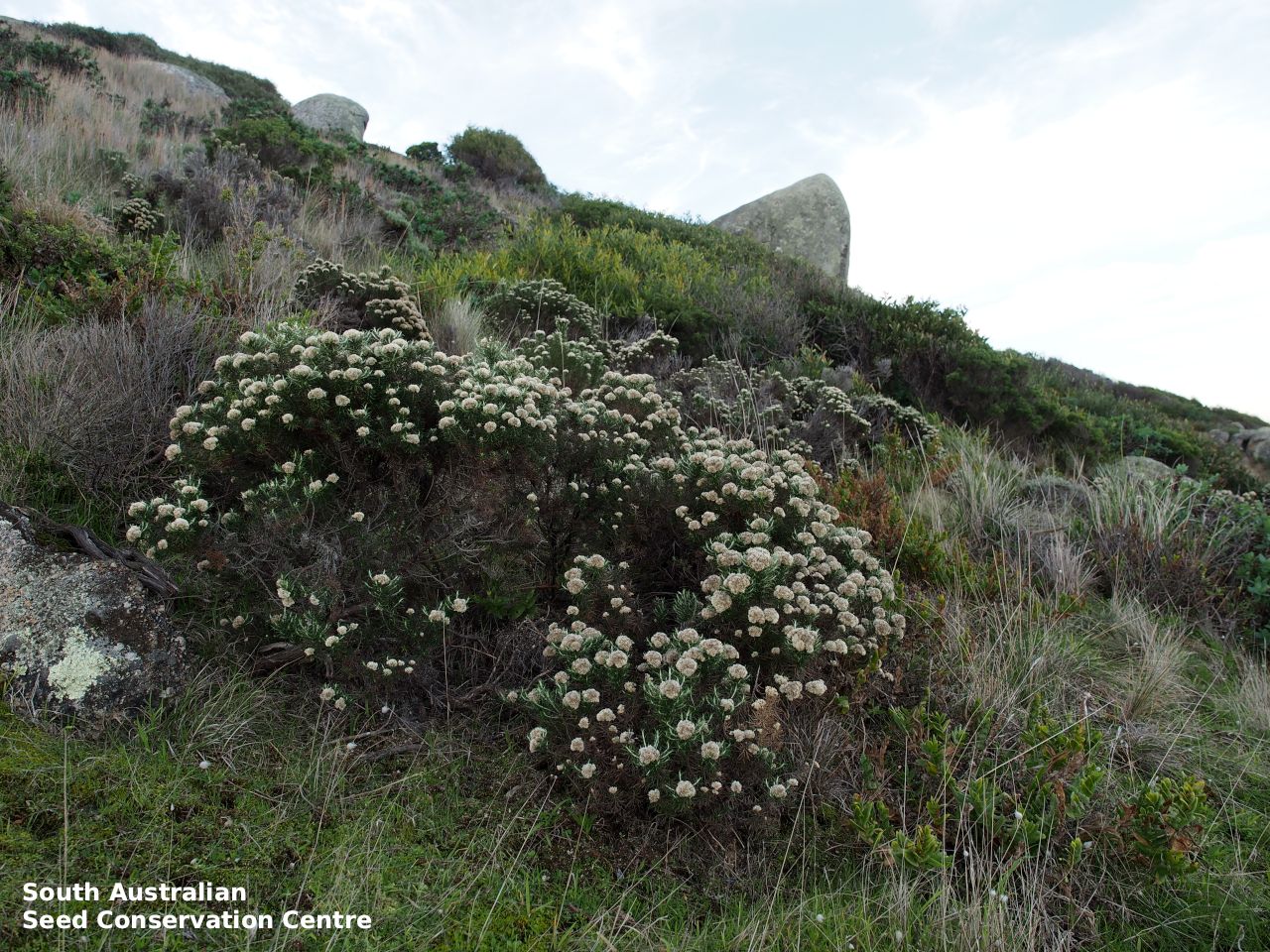
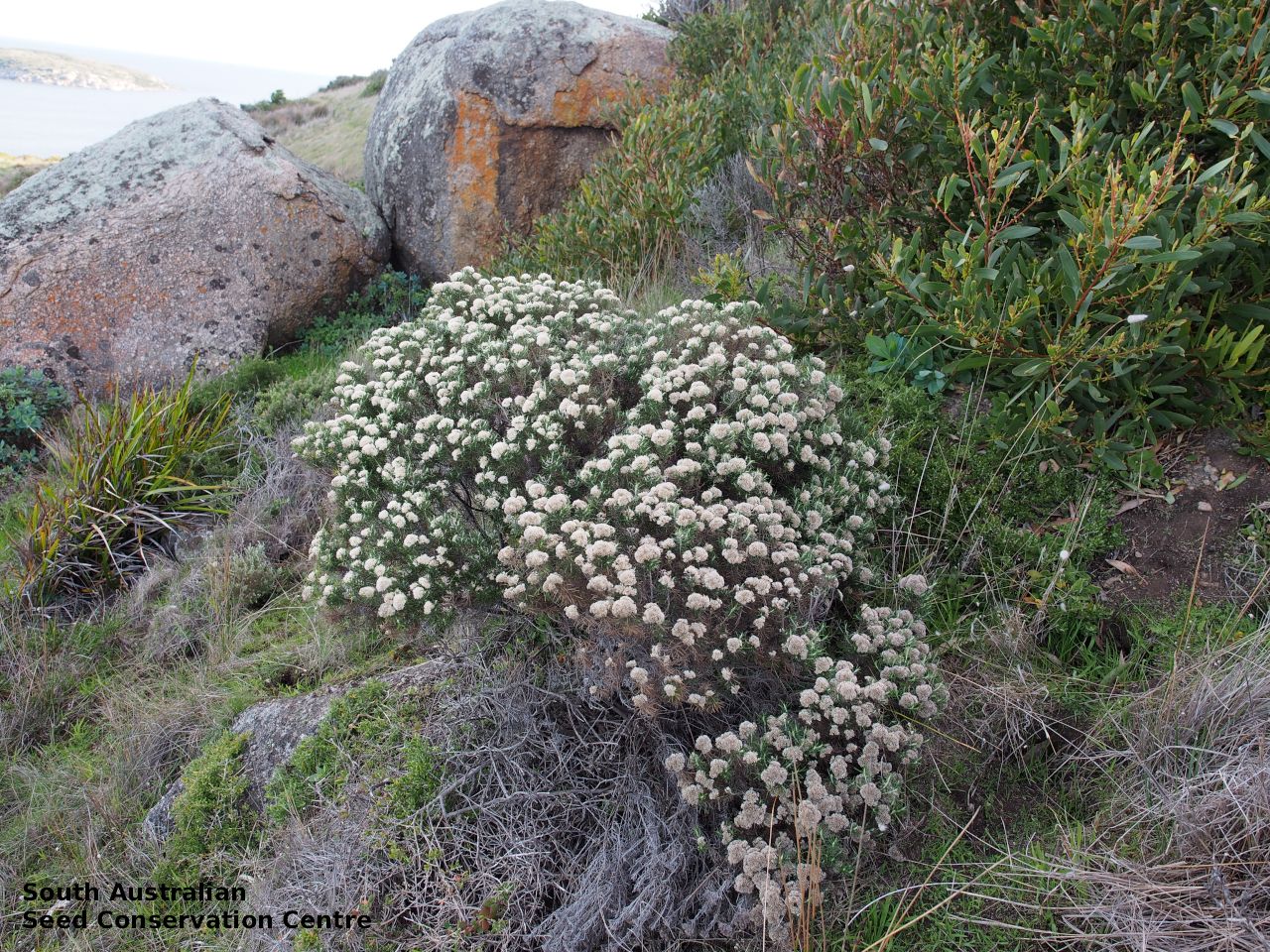
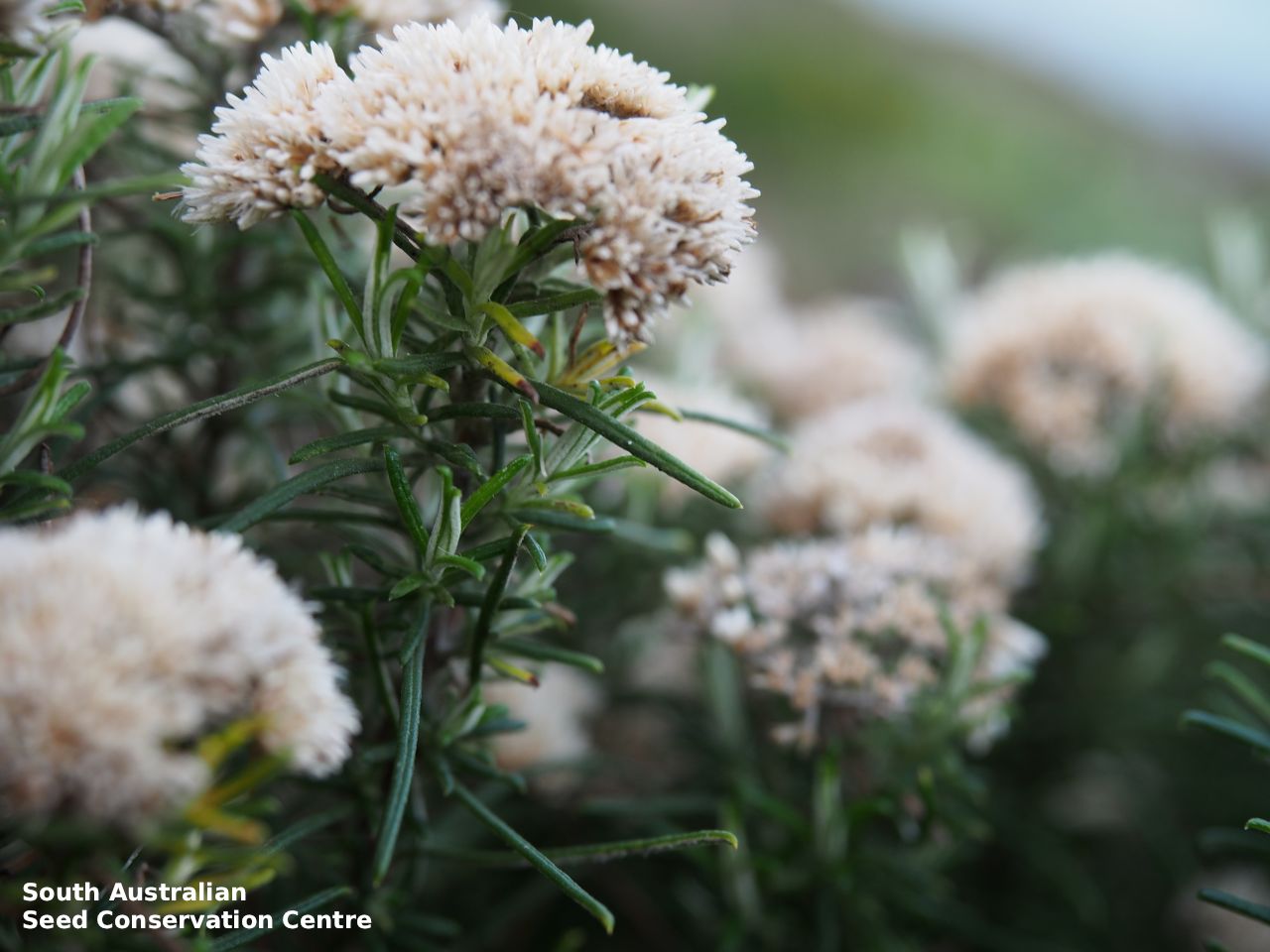
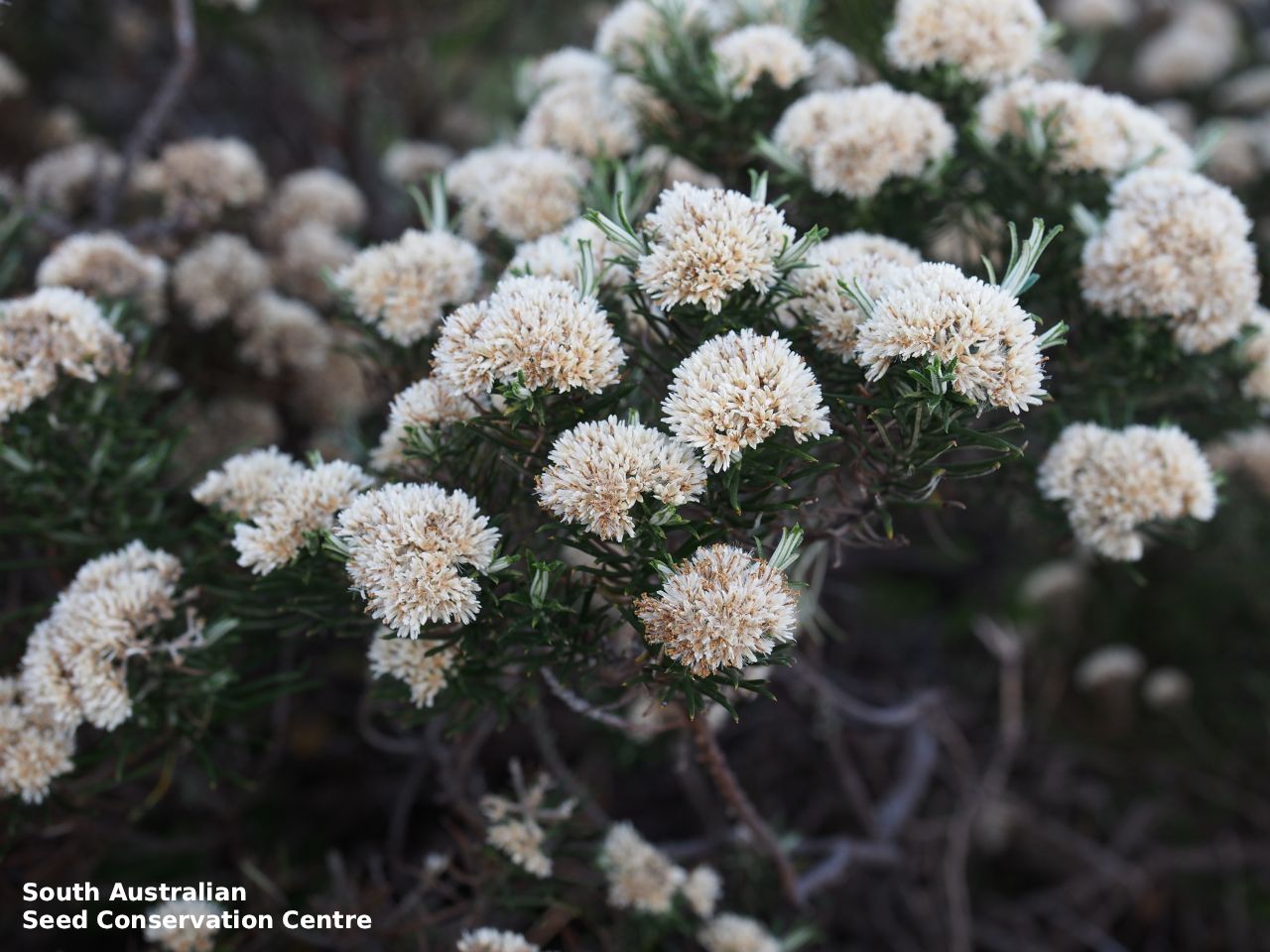
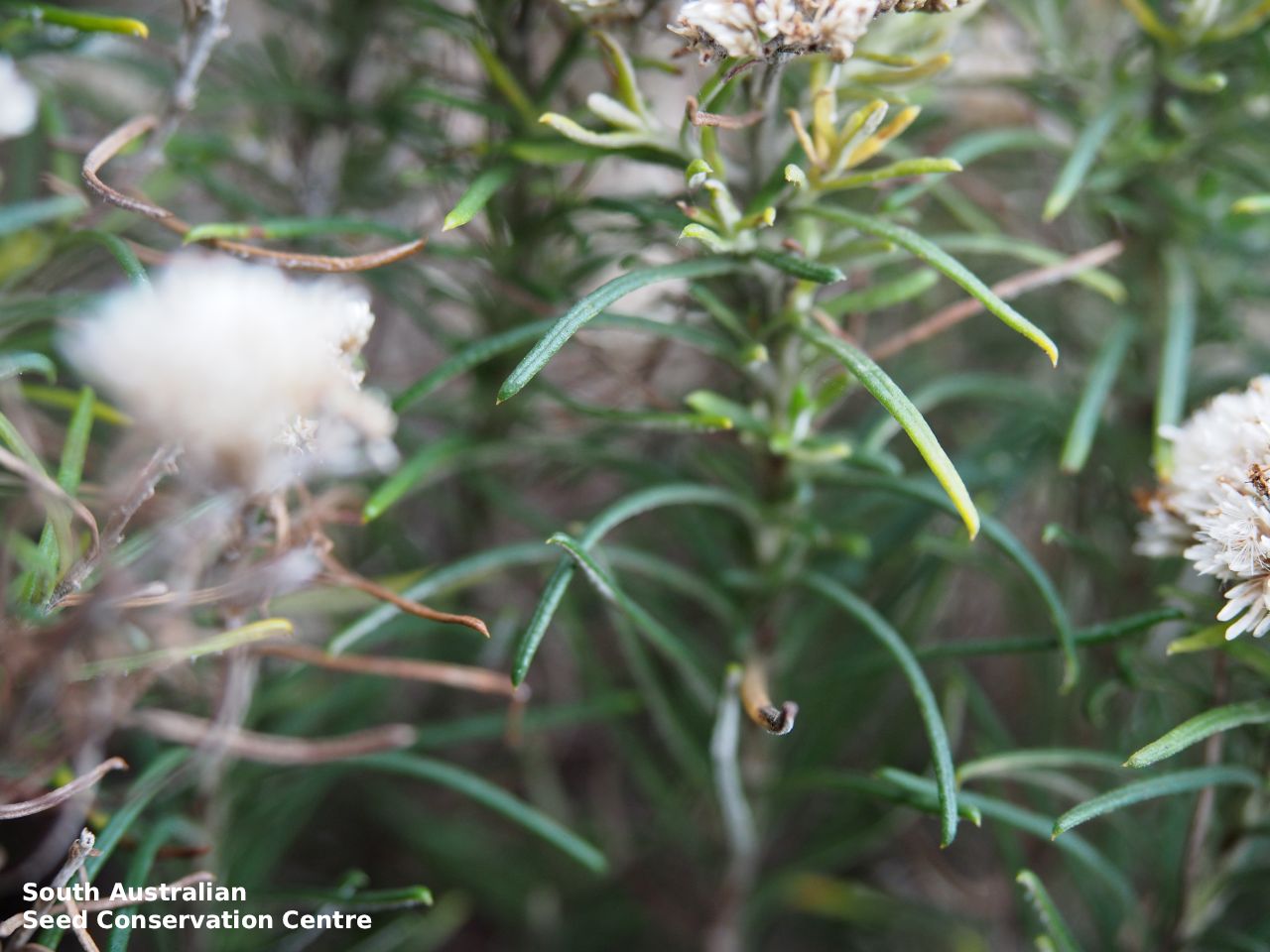
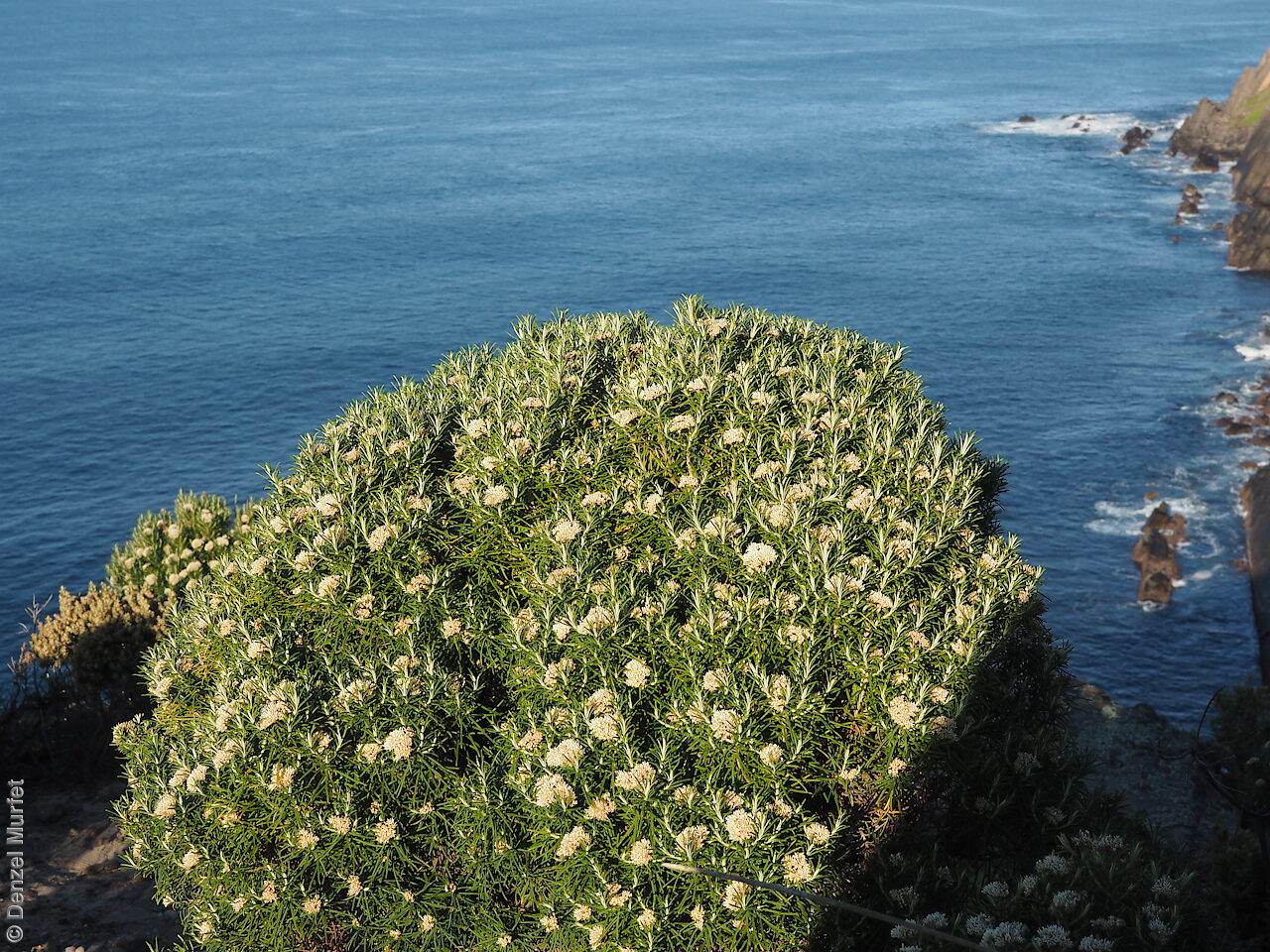
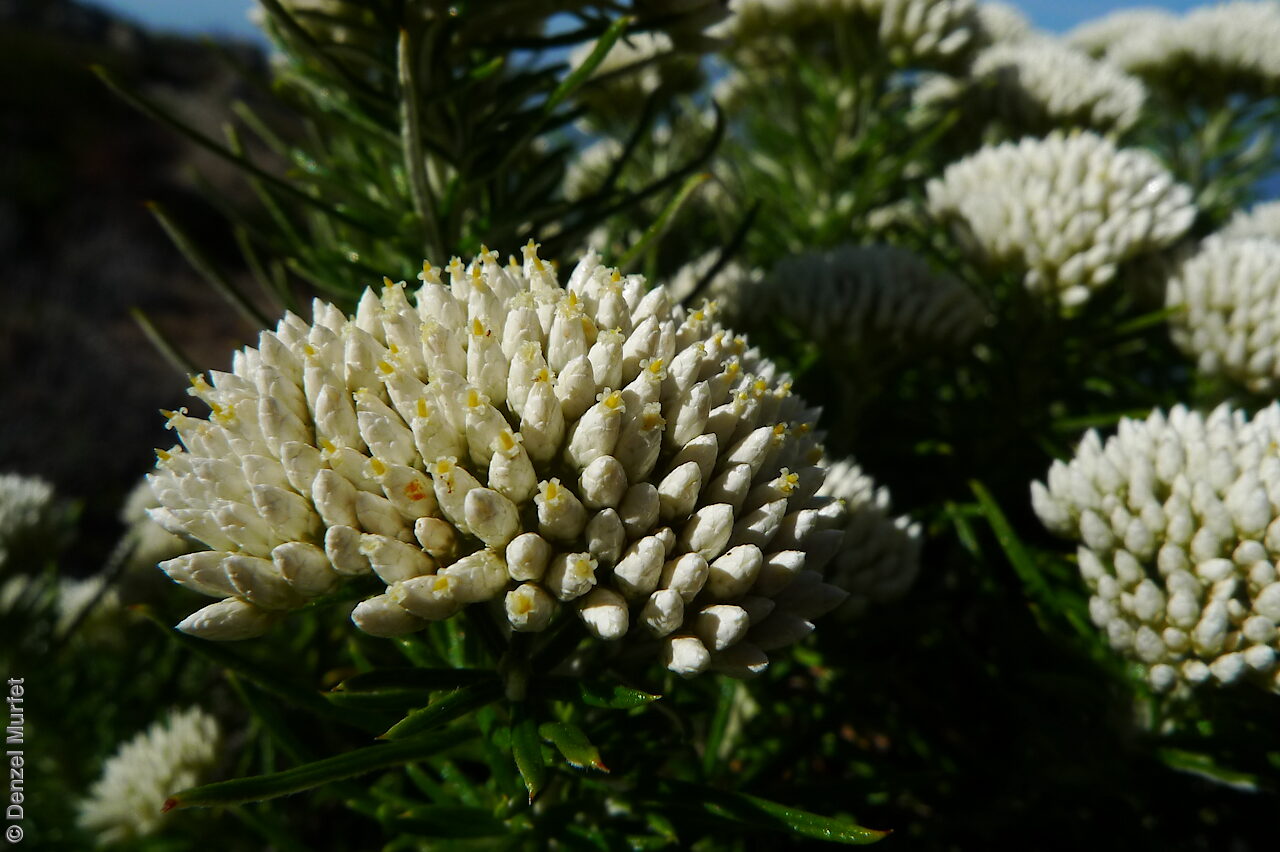
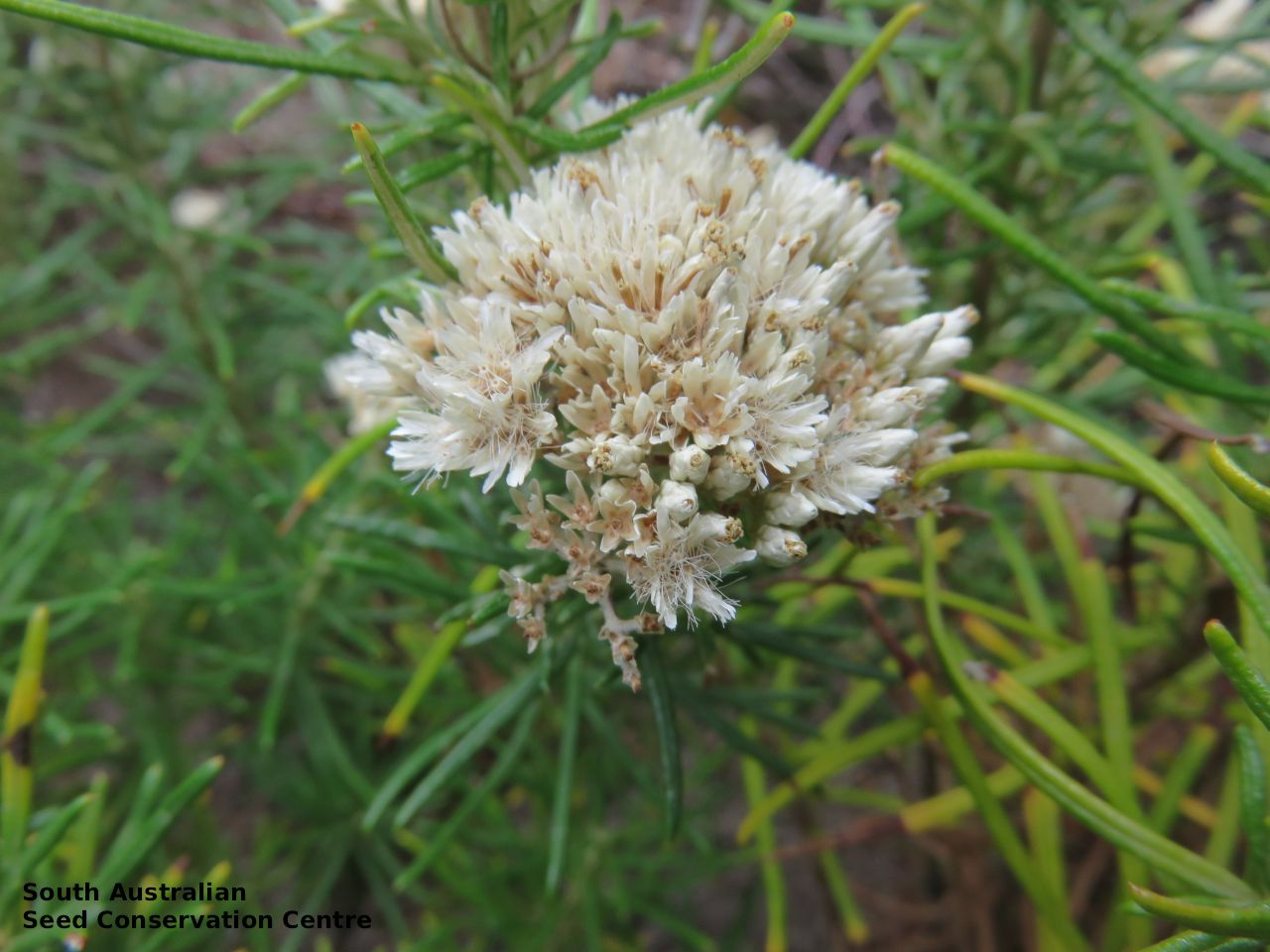
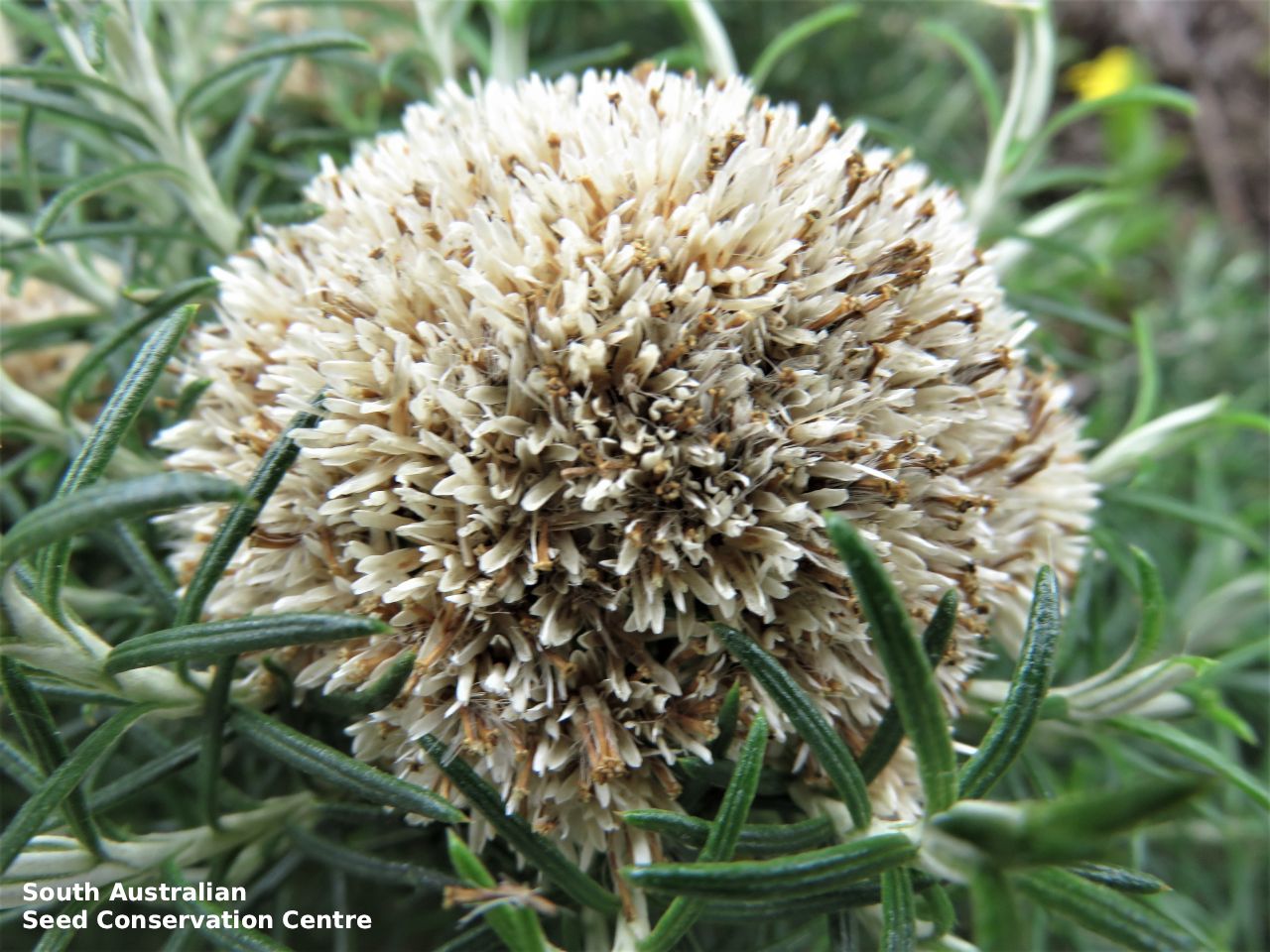
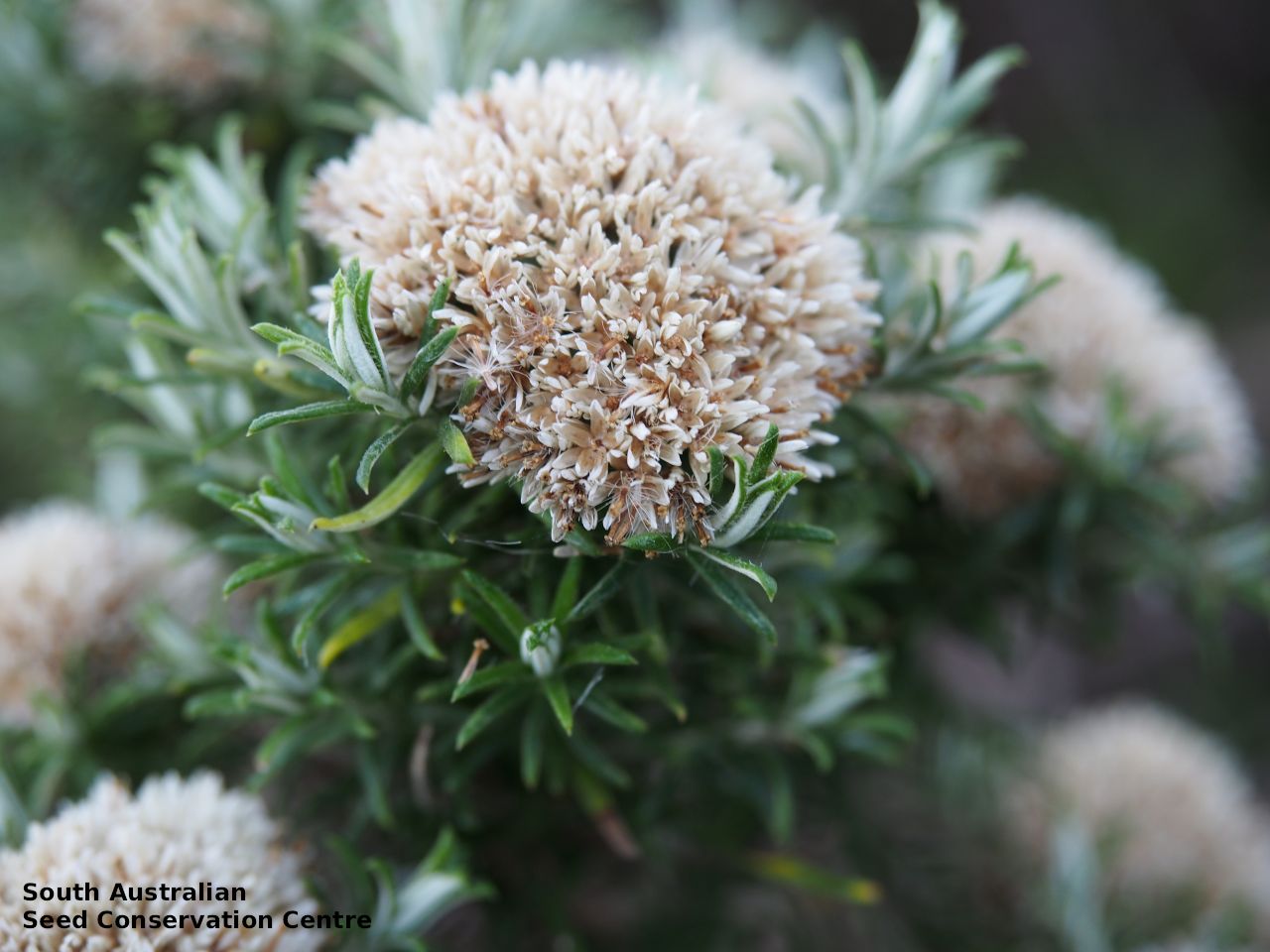
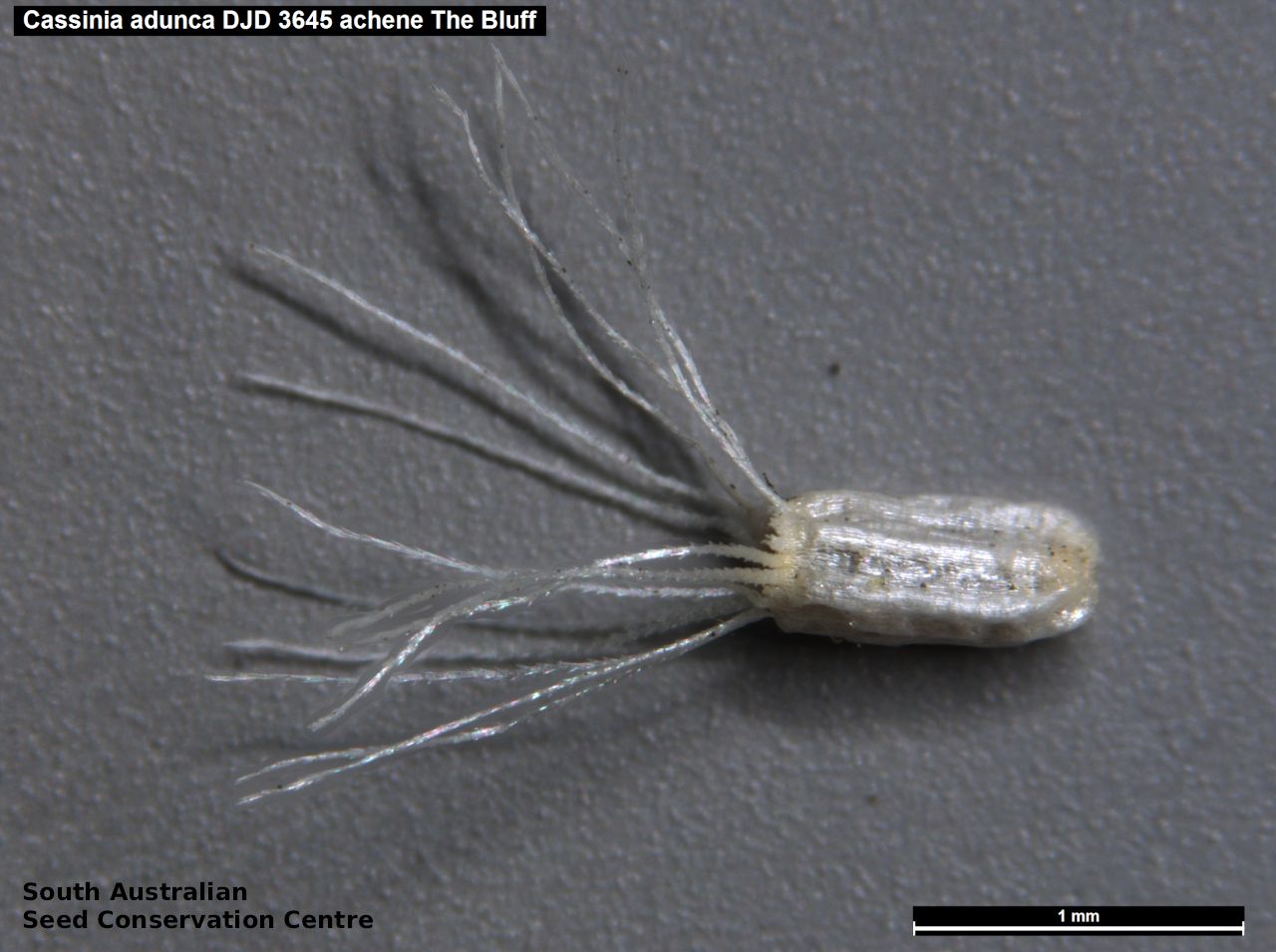
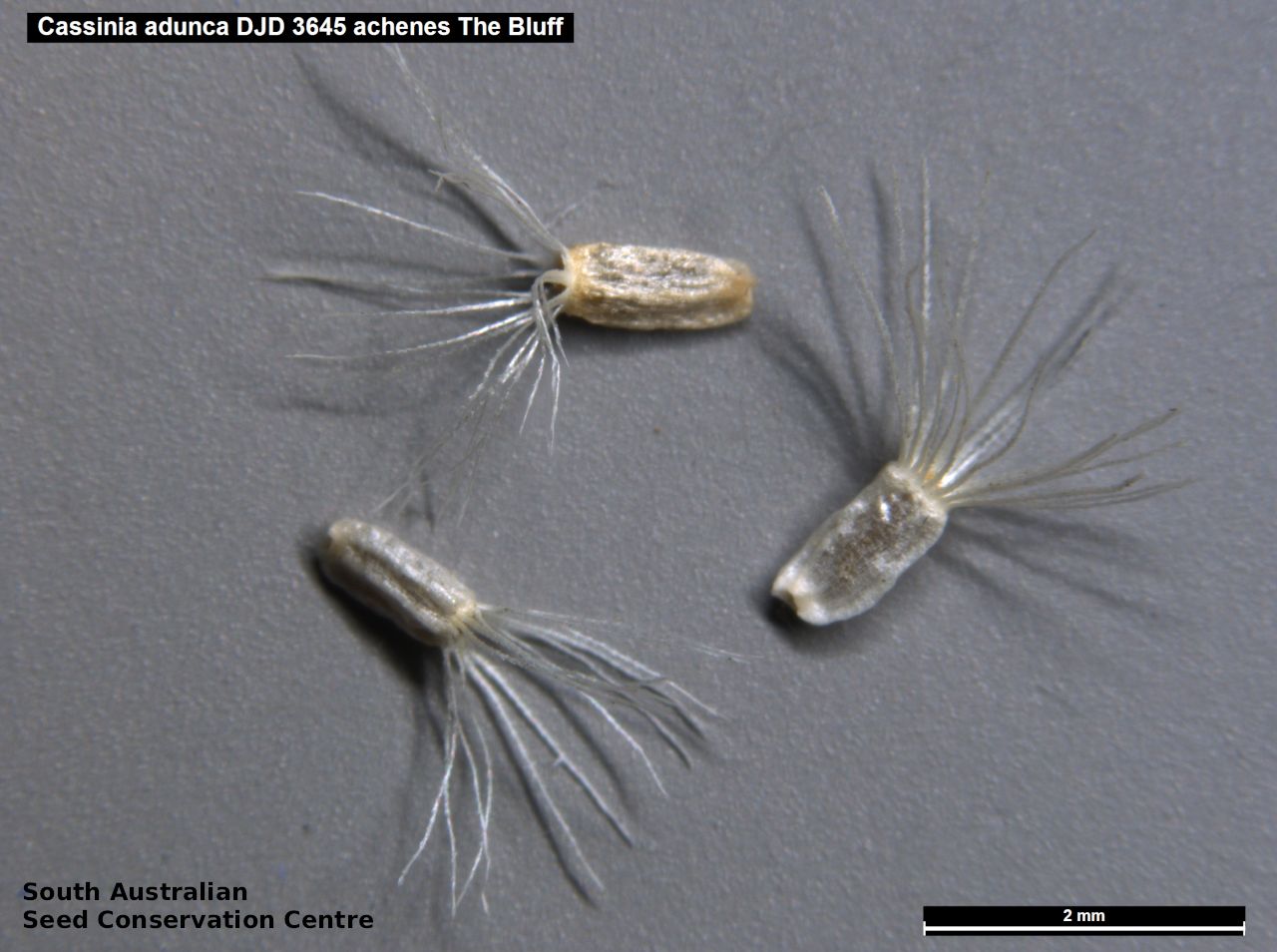

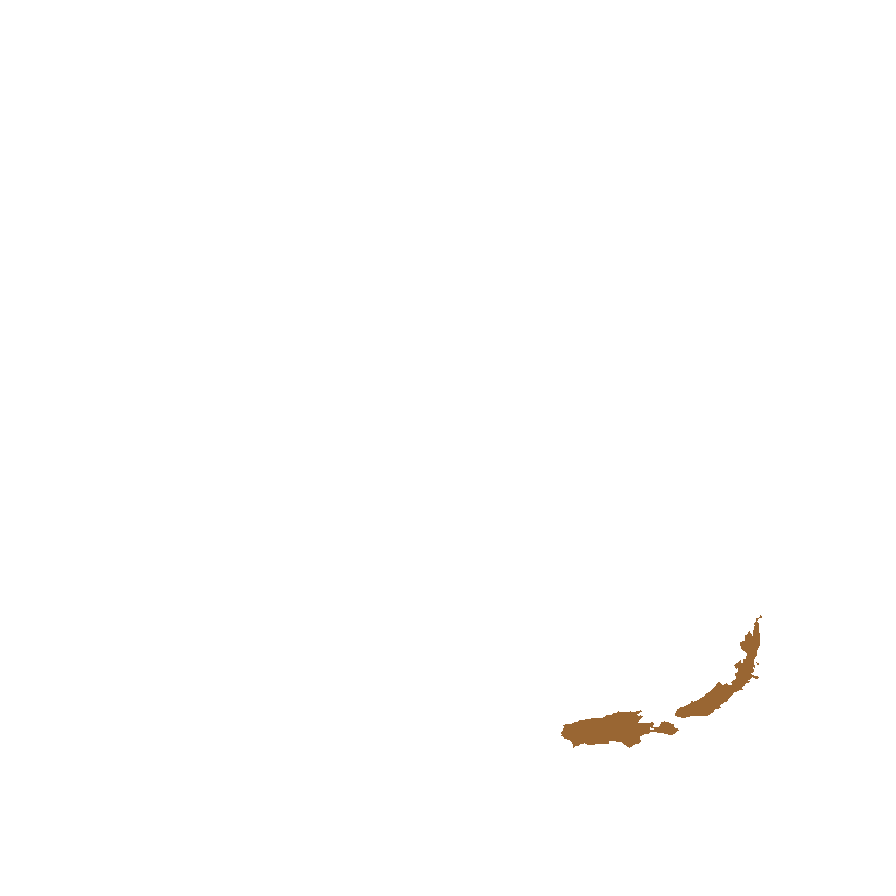
Etymology
Cassinia named after Alexandre-Henri Gabriel de Cassini (1782-1832), a French botanist who published extensively on the Compositae. Adunca from Latin meaning hooked.
Distribution and status
Endemic to South Australia and found on Kangaroo Island and the Fleurieu peninsula, growing on sea cliffs. There are a few records from inland in the southern Lofty Ranges which maybe missed identified. Native. Rare in South Australia.
Herbarium regions: Southern Lofty, Kangaroo Island, Green Adelaide
NRM regions: Adelaide and Mount Lofty Ranges, Kangaroo Island
AVH map: SA distribution map (external link)
Plant description
This species is considered a hybrid of and intermediate between C. complanata and C. tegulata. It is a low-growing shrub with crowded leaves prominently tomentose beneath and branchlets roughened by the decurrent leaf bases. Inflorescences dense clusters at end of stems, with white, greenish based flowers. Fruits are light cream, dense round daisy-head. Seeds are creamy white cylindrical seed to 1 mm long and 0.4 mm wide; smooth with long white pappus at one end. Seed embryo type is spatulate.
Seed collection and propagation
Collect heads that are matured,golden brown and contain brown seeds. Place the heads in a tray for one to two week to dry. Then rub the heads gently with your hands to dislodge the seeds. Use a sieve to separate any unwanted material. Viable seeds will be small and brown. Store the seeds with a desiccant such as dried silica beads or dry rice, in an air tight container in a cool and dry place. Seeds are non-dormant, viable seed should germinate readily.
| Location | No. of seeds (weight grams) | Number of plants | Date collected | Collection number Collection location | Date stored | % Viability | Storage temperature |
|---|---|---|---|---|---|---|---|
| BGA | 28,000 (2.45 g) | 100+ | 23-Jun-2017 | DJD3645 Southern Lofty | 1-Nov-2017 | 15% | +5°C, -18°C, -80°C |
| BGA | 38,800 (3.3 g) | 100+ | 23-Jun-2017 | DJD3645 Southern Lofty | 30-Jun-2018 | 15% | -18°C |
Number of plants: This is the number of plants from which the seeds were collected.
Collection location: The Herbarium of South Australia's region name.
% Viability: Percentage of filled healthy seeds determined by a cut test or x-ray.